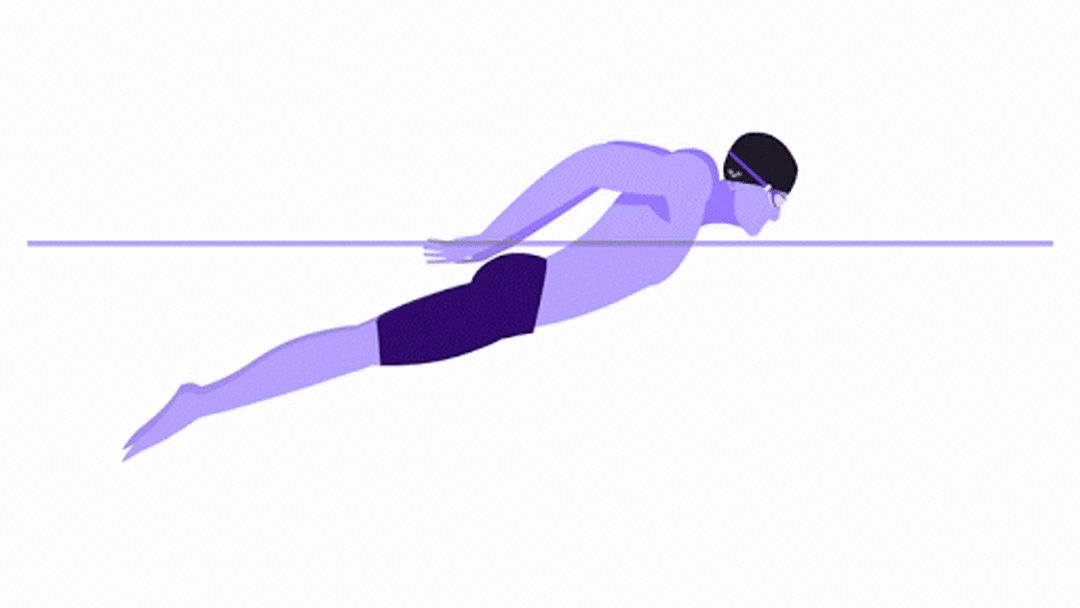Every child and young person needs support to help them learn or engage with activities. Some need additional or different support from those of the same age to ensure that everyone benefits from all they participate in. We want to address some of the important questions around these needs. Welcome to ‘All inclusive’.

Can you swim? When did you learn? Were you inspired by watching one of the Olympic greats winning a clutch of medals at an Olympic Games, maybe smashing a world record or two on the way?
When you started to swim, taking those first, tentative steps into the water, could you immediately swim like Adam Peaty or Rebecca Adlington? Of course not, it took them many years and loads of practice to get that good. But, after your first few swimming lessons, realising that you weren’t going to be picked for Team GB just yet, did you give up?
Did you let the fact that you still had a lot to learn put you off from being a better swimmer? Maybe not in the Adam Peaty or Rebecca Adlington league, but becoming a competent swimmer nevertheless? Hopefully you kept going.
It can be a bit like that when we start to explore and learn how to include children and young people with additional needs in our children’s and youth work. We take those first, tentative steps and realise that we have a lot to learn, but little by little, just like swimming, our confidence grows and we get more skilled at it.
The first time we, metaphorically, get our faces wet isn’t the time to give up, it’s the time to recognise the progress we’re making and to carry on. Even Adam Peaty and Rebecca Adlington wore armbands once!
But what made them so much better at swimming, and what we learn from them that can help us to be so much better at including children and young people with additional needs? Big feet and amazing physique aside, here’s three things they did that we can copy:
1. They learned from others
Little Adam and Rebecca didn’t dive in on their first visits to the pool and tear down the fast lane, they needed to learn how to swim first, taking lessons like most of us did. In the world of supporting children and young people with additional needs, we don’t have all the skills immediately either, so we need to learn from others who have maybe been doing it longer.
Are there any churches near you who are already doing an amazing job of including children and young people with additional needs? Why not reach out to them and ask for their tips and ideas.
What did they learn (maybe the hard way) when they were starting out on this journey? Maybe you could agree to work together and collaborate on some local initiatives.
Or perhaps you could link into groups like the Additional Needs Alliance, a collective of 3,000 children’s, youth and family workers, parents and carers, church leaders, practitioners and more who are passionate about making a difference, particularly in a church context, for children and young people with additional needs. If you use Facebook, why not join us in our lively and helpful social-media group?
2. They practised
They would have put a lot of time and effort into improving as swimmers, looking for lots of little improvements that collectively made them better and better. One of the greatest golfers that ever lived, Gary Player, tells the story of how he proved that practice makes perfect: “I was practising in a bunker down in Texas and this [guy] with a big hat stopped to watch.
The first shot he saw me hit went in the hole. He said: ‘You got 50 bucks if you knock the next one in.’ I holed the next one. Then he says: ‘You got $100 if you hole the next one.’ In it went for three in a row. As he peeled off the bills he said: ‘Boy, I’ve never seen anyone so lucky in my life.’ And I shot back: ‘Well, the harder I practise, the luckier I get!’”
The more we practise at supporting children and young people with additional needs, the better we will get too. Gary Player didn’t chip in those golf shots without having spent a lot of time in preparation and practise. We need to put in that work too if we are going to learn how to include children and young people with additional needs. What strategies are being used in schools, for example, that we can put into practice in church?
How can what we’ve learned supporting child ‘A’ be useful for us as we look to support child ‘B’? How can a few minutes checking the room setup, equipment and resources, preparing our team, and praying, help us to be better at what we do?
3. They pushed through
Both Adam Peaty and Rebecca Adlington (and indeed Gary Player) had setbacks in their sporting careers, times when things went wrong, injuries, off days. Did they let these stop them from chasing their dream? No, of course not, they pushed through and used the setbacks as motivation to go even further.
Will we experience setbacks as we support children and young people with additional needs? Yes, of course we will, sometimes all that we have planned will fail, but it is what we do next that really matters.
We can give up, and decide this isn’t for us, or we can push through, learn from the setbacks, and do better next time. By pushing through we are giving ourselves a second chance and giving the children and young people we are supporting a second chance too.
It’s often said that our God is the God of second chances, as he picks us up and dusts us down time and time again. Let him do so for you as you learn to support children and young people with additional needs too.
When we are learning to swim, we are given water wings to stop us sinking. In the additional needs world, those water wings can be other people that have a bit more experience, but they can also be God too as he keeps our head above water as we serve him and serve the most vulnerable, marginalised and excluded in our society in his name: children and young people with additional needs.
So… just keep swimming!



































